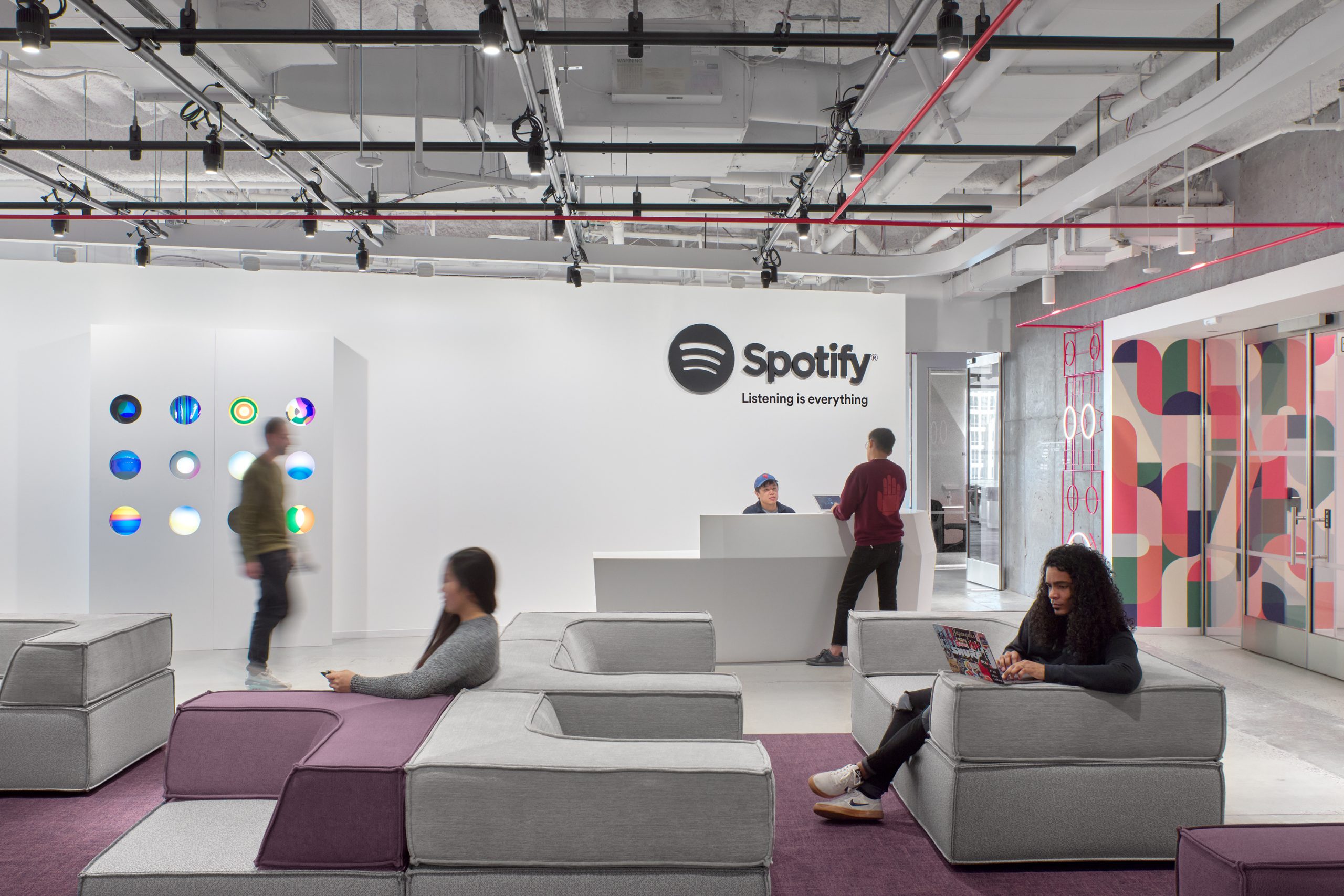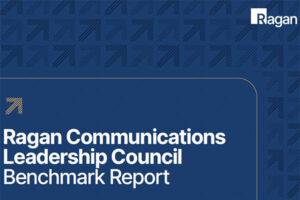How Spotify orchestrates internal comms
The company’s internal communications manager shares a behind-the-scenes look at the audio streaming giant’s tuneful, rhythmic messaging strategy.

Editor’s note: We are re-running the top stories of 2021 as part of our year-end countdown.
You might have heard the Hans Christian Anderson quote, “Where words fail, music speaks.”
At Spotify, the world’s preeminent audio streaming subscription service, the words seem to flow just fine. Though TK Breuer, one of Spotify’s internal communications managers, says Spotify’s nearly 80+ communicators lean pretty heavily on emoji, too. And alien-centric content. Whatever grabs employees’ attention, says Breuer, who used to work for Bloomberg, but has been with Spotify for nearly two years now.
He partners with another internal communications pro, Ruth Chrystie, to produce “The Note,” Spotify’s thrice-weekly newsletter. Breuer says “The Note” offers a lighthearted, fun and playful rundown of crucial company news accompanied by pulses of uplifting, often out-of-this-world content, as seen below.

Breuer notes that the branded green Spotify button above opens the song “Aliens Exist” by Blink-182 on Spotify. He adds, “For our newsletter, we try to link to music and pods when we can. We also love using emoji!”
“The Note” goes out to the company’s nearly 7,000 employees, who are distributed around the globe and have flexibility to work from almost anywhere. The plan is to keep it that way. The company announced their “Work From Anywhere” program in February that allows employees more choice in whether they work primarily from home or from an office, along with flexibility with their location – even after the pandemic abates.

TK Breuer
“Our founder and CEO, Daniel Ek, has been talking about becoming a distributed-first company for several years now.” Breuer says, noting that: “the pandemic just happened to accelerate us taking our first major steps towards that. It proved the theory that we could still be productive and connected while working apart.”
Whereas other big companies are still grappling with (and backtracking on) this confounding return-to-the office issue—and dealing with all the accompanying vaccination uncertainty—Spotify keeps cruising along, confident it made the right decision to offer permanent flexibility eight months ago.
Managing ‘hyper-growth’—mindfully
Spotify was founded in 2006 by Swedish entrepreneurs Daniel Ek and Martin Lorentzon. Since that time, the company has mushroomed and now boasts 365 million users worldwide. The streaming giant’s incredible rise is only accelerating, according to Breuer, who cites Spotify’s “hyper-growth” as a top priority and challenge for his team. His aim is “to figure out how to target global, diverse comms” while trying to make sure “The Note” and other internal Comms channels remain relevant.
To ensure messaging remains on point, his team is analyzing data, including open rates (they shoot for the 60-70% range), click throughs and engagement with content. However, he suggests looking beyond mere metrics. “How are we driving culture and spotlighting our initiatives that make employees feel a part of a larger mission?” he says.
According to its sustainability report, “Heart & Soul is Spotify’s global initiative on mental health with a goal to create a culture of awareness and acceptance around mental health issues, such as depression, anxiety and addiction.”
Spotify reports that 419 employees used its employee assistance program in 2020, called “All The Feels.” The report also says Spotify has “expanded the Heart & Soul Team from 14 to 52 employee ambassadors across 20 locations and restructured the team to three regions with a lead in each region and additional local leads for the bigger offices.”
Internally, the company also recently announced Spotify Wellness Week, a full week of paid-time-off so employees can prioritize mental health, and spend time with friends or family, or other things they enjoy.
Tips for storytelling success
As you might imagine, this is a lot of information and messaging to manage. Breuer says Spotify uses Workplace, Confluence, Slack and Google Workspace to keep in touch with each other. To keep messaging focused, his team homes in on three main content buckets:
- Current company news.
- Spotlighting employees.
- Culture and values.
In the context of these buckets, Breuer strives to tie messaging back to key business objectives. And, of course, employee feedback. The Internal Comms team typically sends out a survey measuring the effectiveness of their channels each year, Breuer says, but it’s essential for comms pros to listen intently to their colleagues every day.
“Be a journalist. The more in tune you are with what people are saying, the better stories you’ll craft,” he says.
Breuer offers other tips for success in the fast-changing world of internal communication. Focus on learning how to multitask and juggle different priorities, he suggests. And, especially in a remote-work setting, don’t be too insular. He’s started multiple chat rooms on Slack at Spotify to garner more authentic feedback, which is rocket fuel for more compelling internal storytelling.
“Use the power of a crowd to get ideas,” Breuer says, “Listen to employees and what they’re saying online. That often predicts what’s coming next, whether it’s a crisis or something newsworthy.”
You might not have the luxury of booking a beautiful music room stocked with guitars, bass and drums at your disposal, as Spotify’s NYC-based employees do. But the onus is on communicators to set up their own kinds of “jam sessions” that can forge substantive connections, fuel creativity and make people feel genuinely heard. That sort of authentic connectivity is music to everyone’s ears.







